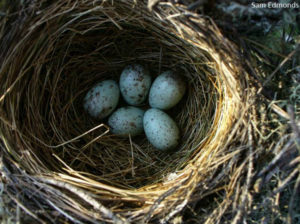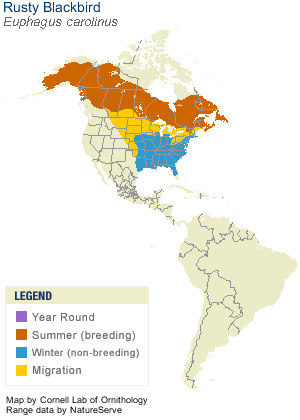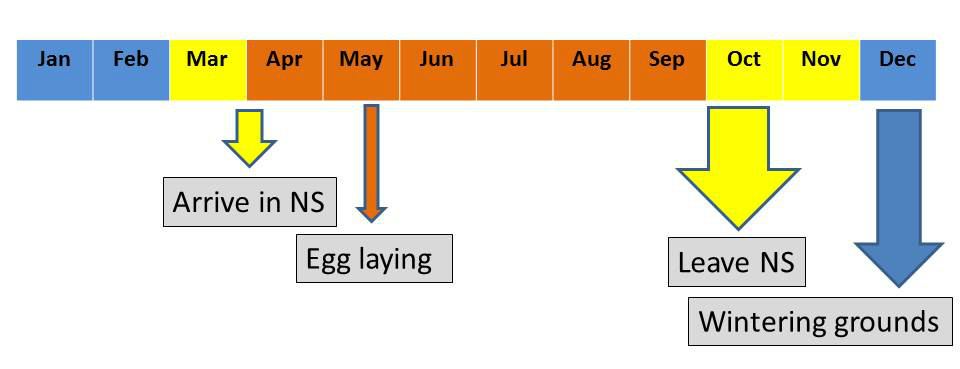The Rusty Blackbird as a medium-sized blackbird whose breeding range spans the continent of North America from Alaska to Newfoundland. The northernmost extent of this breeding range is the tree line. These migratory birds winter in the southeastern US, especially the lower Mississippi Valley and the southeastern Coastal Plain.
During migration between their wintering and breeding grounds Rusty Blackbird often join mixed flocks with hundreds of other birds, including Brewer’s Blackbirds, Red-winged Blackbirds, Common Grackles, American Robins, European Starlings, Brown-headed Cowbirds, and Blue Jays.
Breeding and Life History
Up to 70% of this species breed and nest in Canada. Rusty Blackbirds are one of the earliest migratory species to arrive on their breeding grounds. They arrive in Nova Scotia between March and April to form pairs and establish large territories ranging from 4 to 172 ha. This species has high site fidelity, meaning a high proportion birds return the the same site every year to breed, build their nests, and raise their young.

Females are solely responsible for nest building. Nests are cup-shaped and often found in short coniferous trees (especially Black Spruce in eastern Canada) within 3m of the ground. Females lay 3-5 speckled pale blue eggs around mid-May which are incubated for approximately two weeks. After 10-12 days of growth the young leave the nest.
Rusty Blackbirds remain on their breeding grounds until the fall, generally not arriving on their US wintering grounds until November or December. Thus, this species spends a large proportion of its annual cycle on its breeding grounds.
Rusty Blackbird migration phenology, with a focus on Nova Scotia. Blue = wintering ground; yellow = spring/fall migration; orange = breeding ground.



